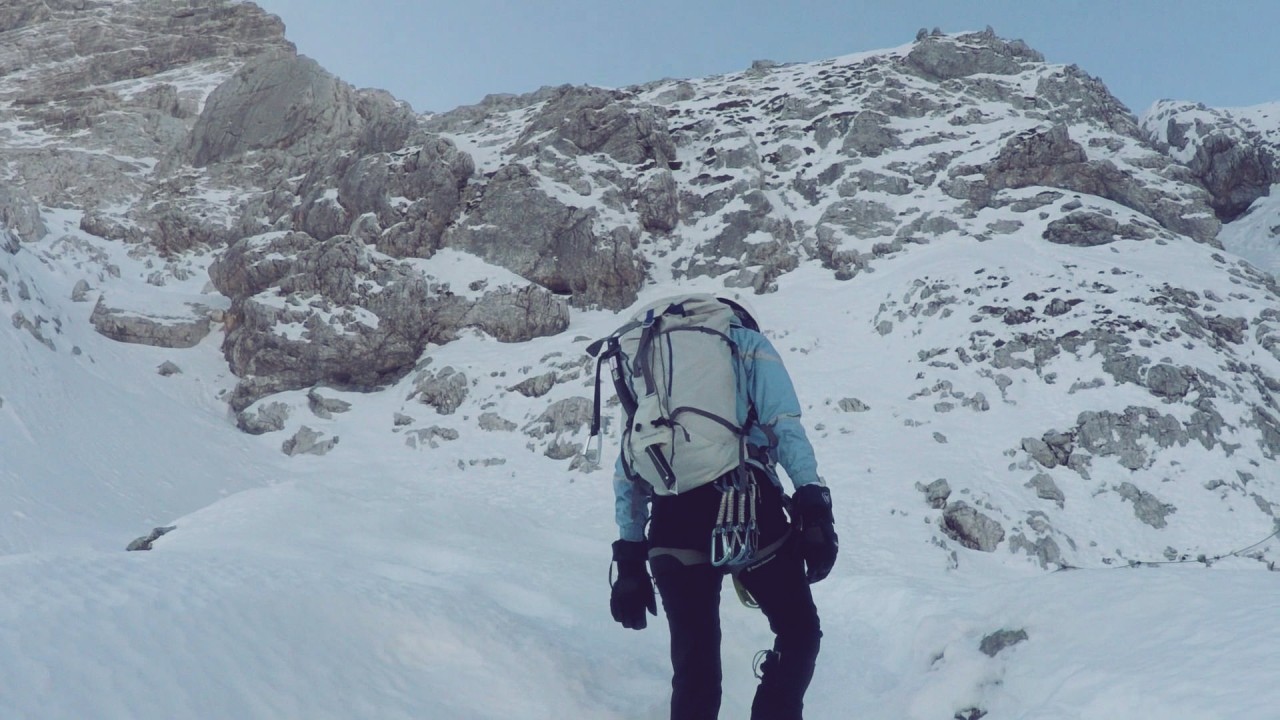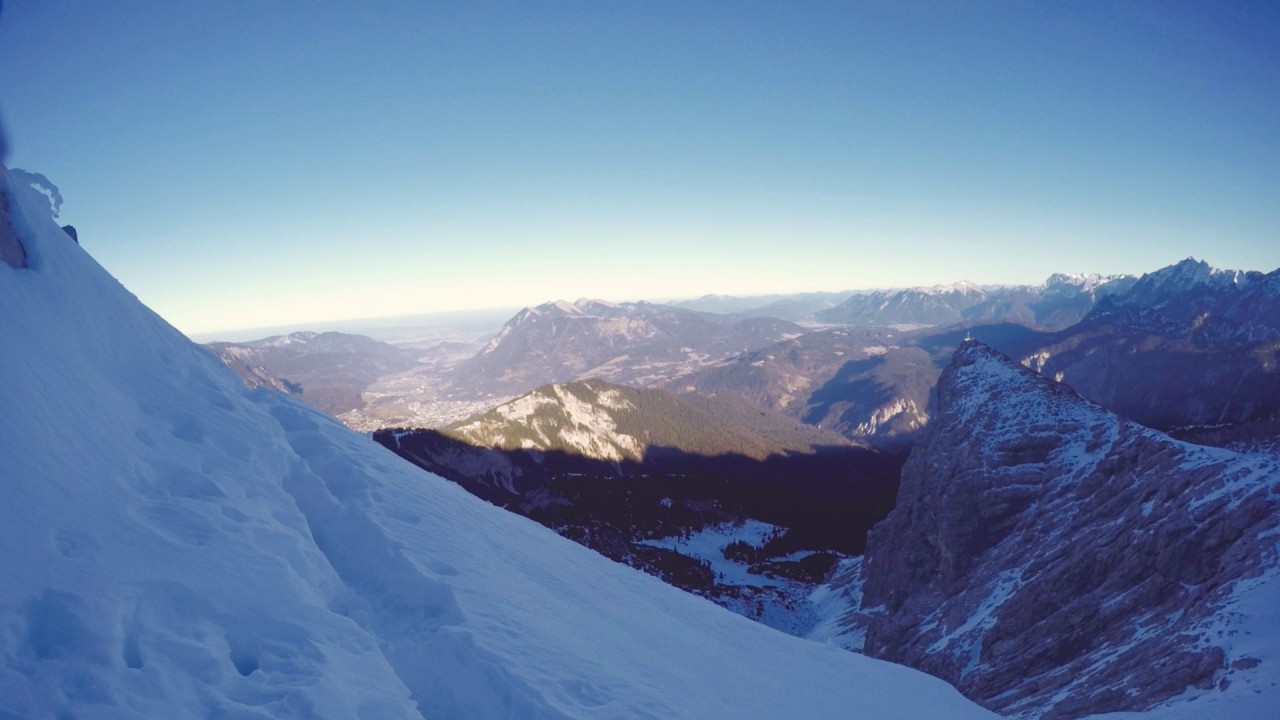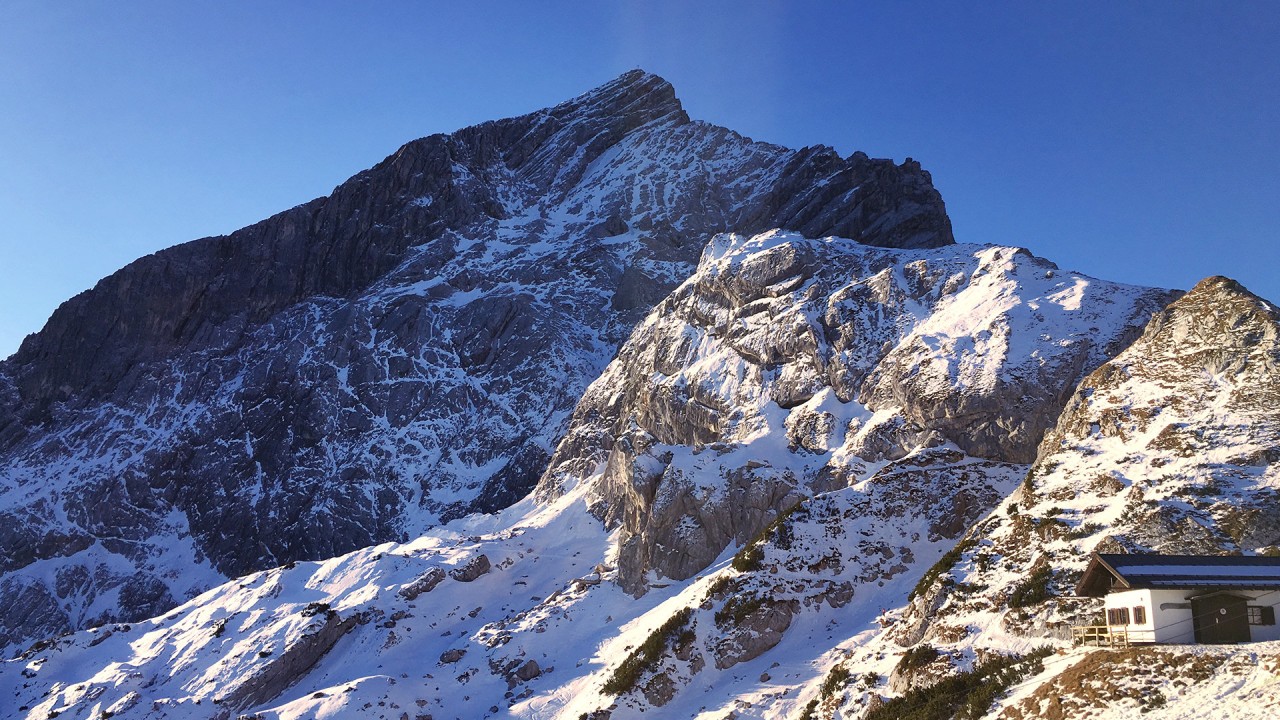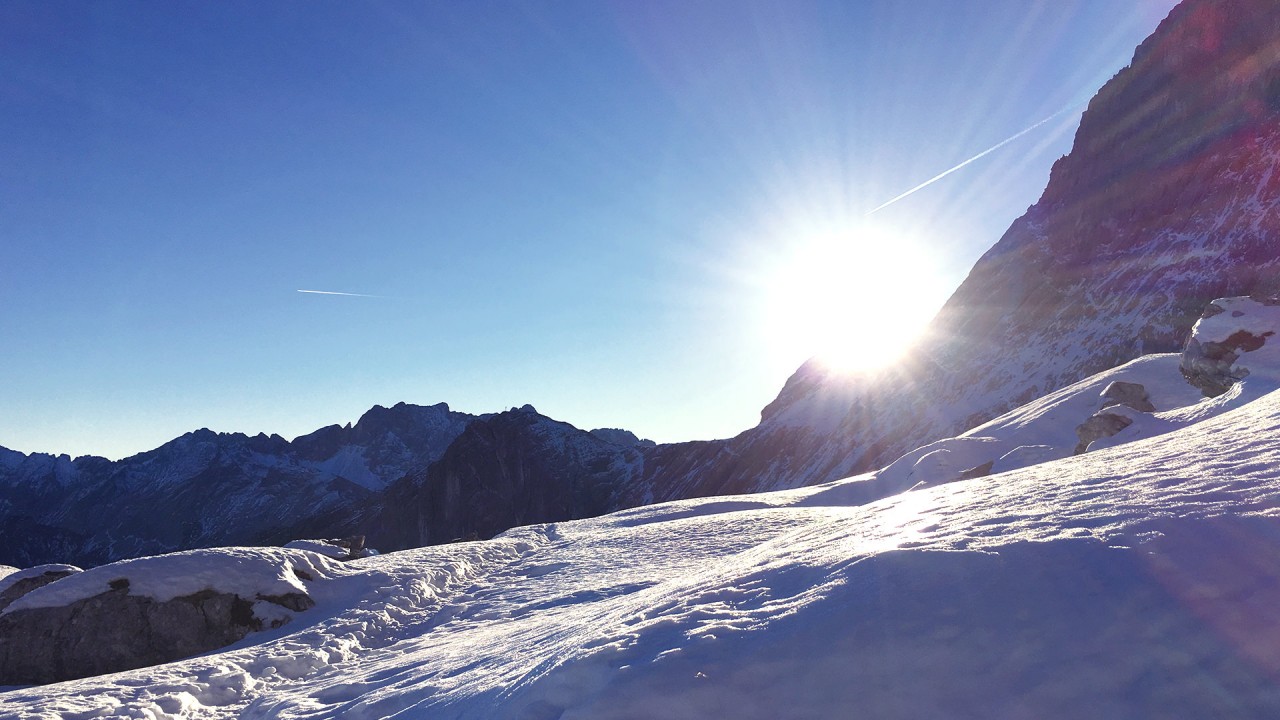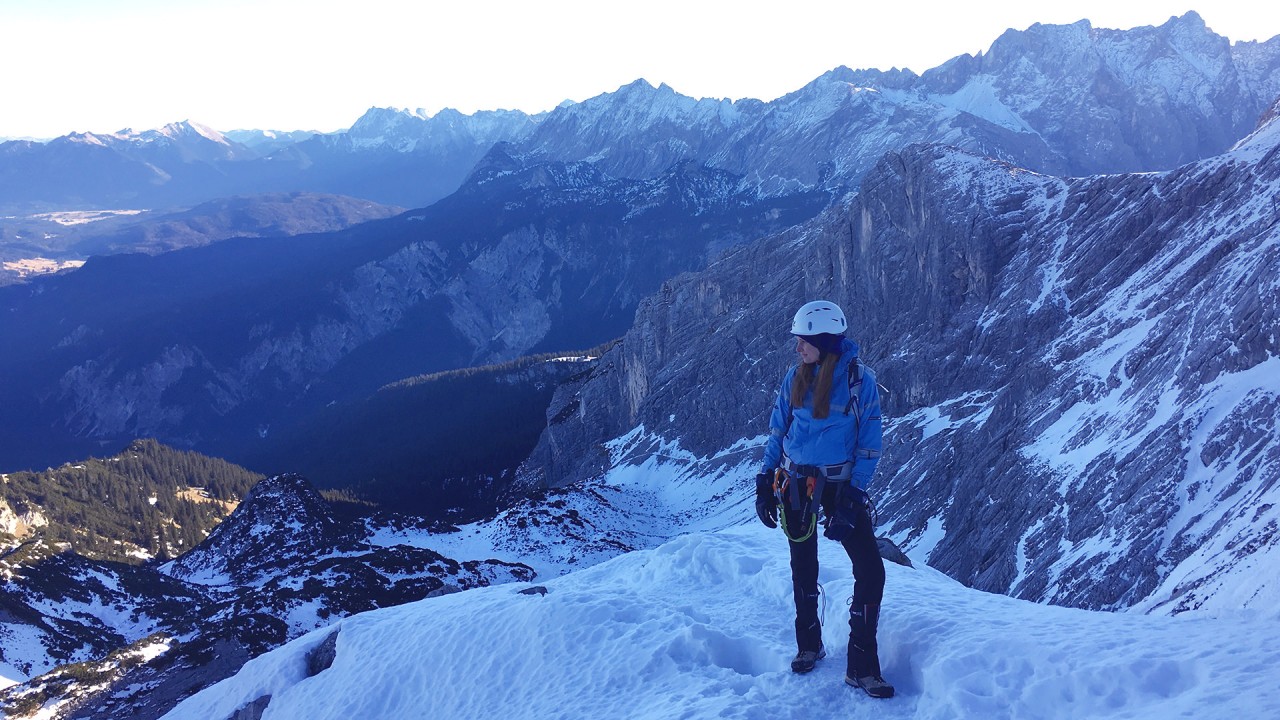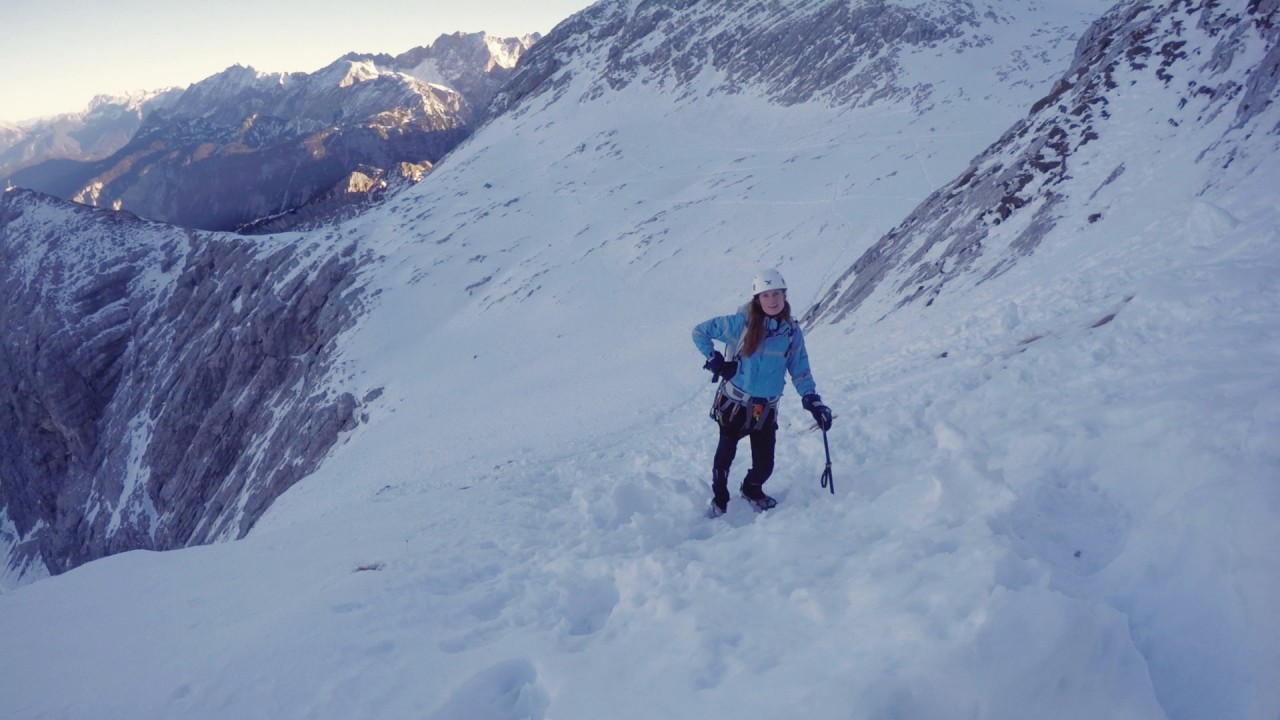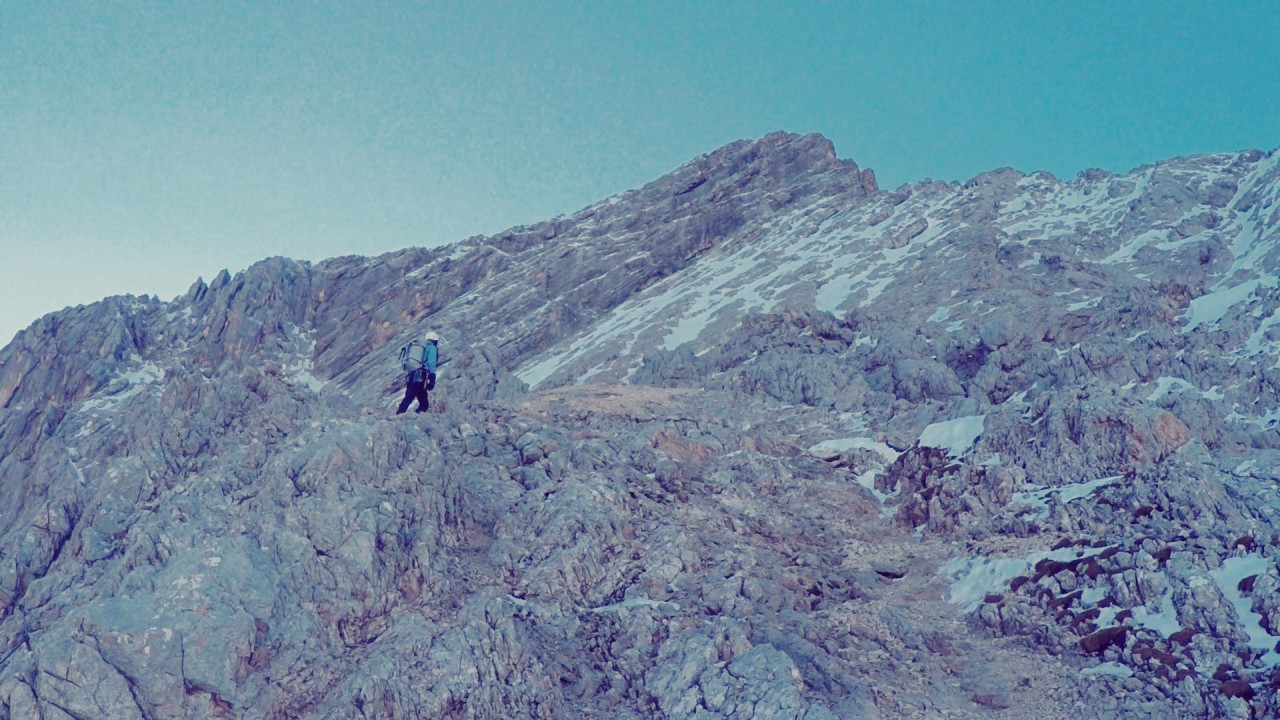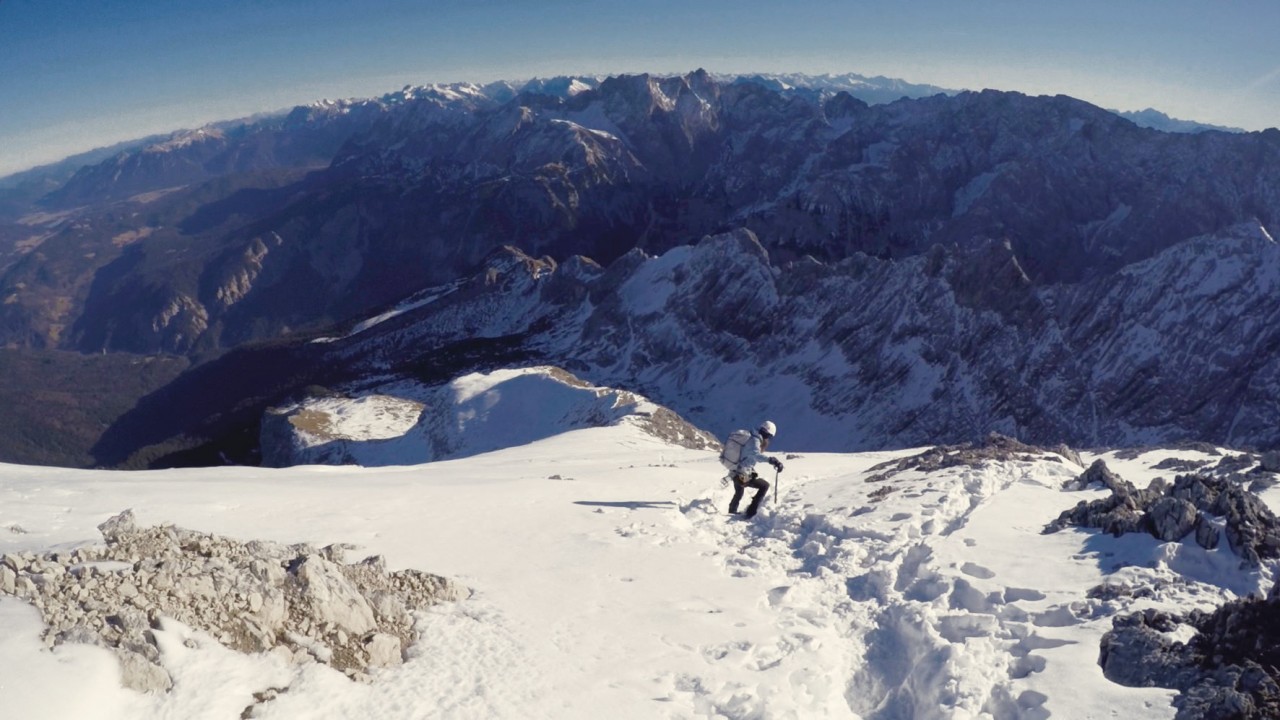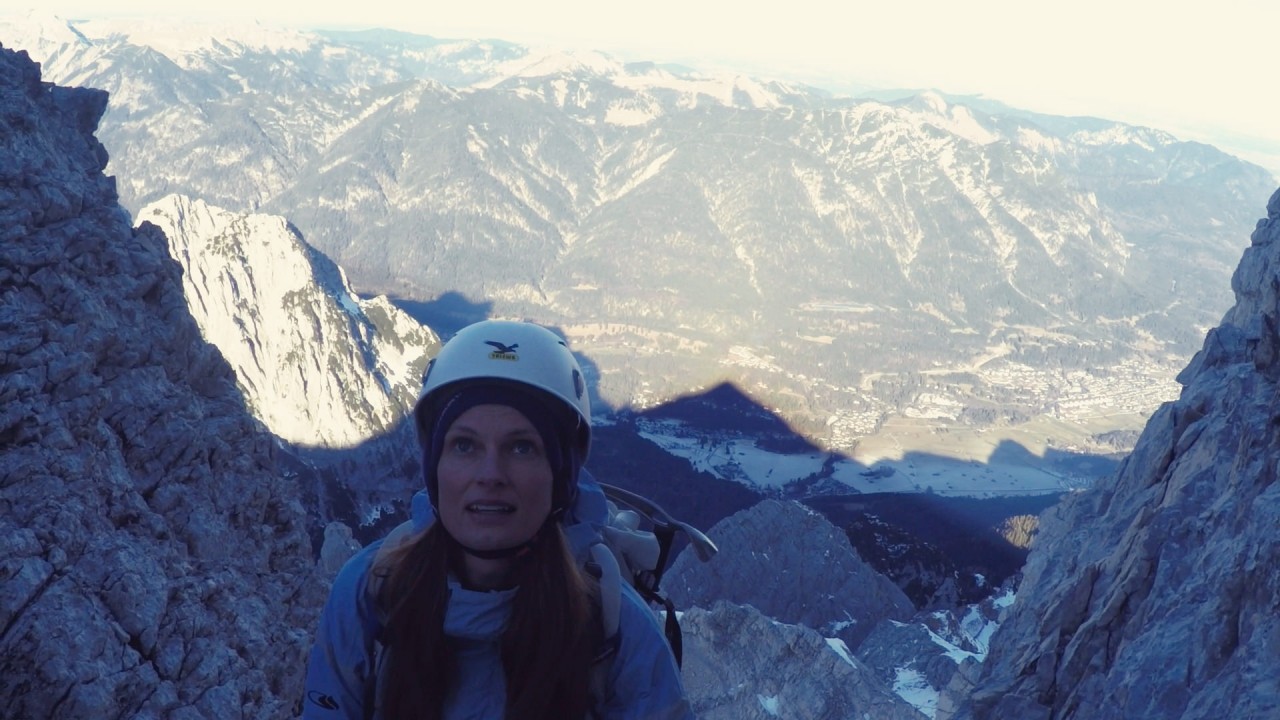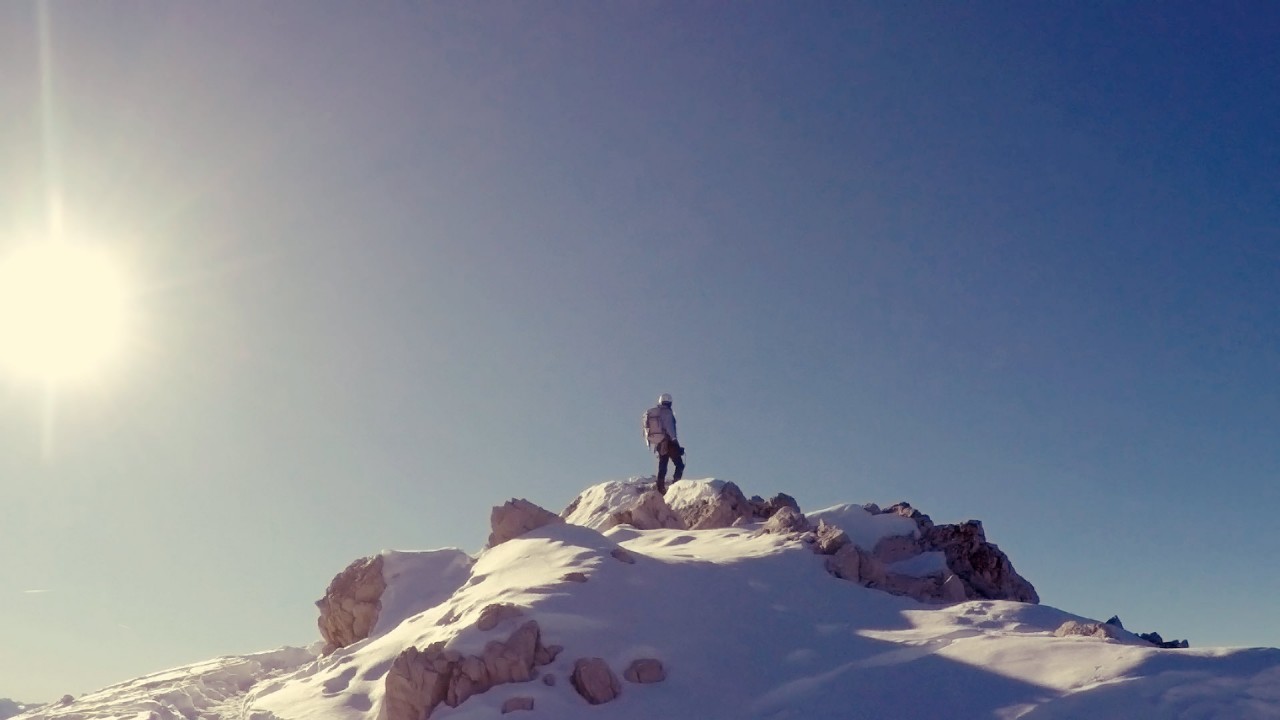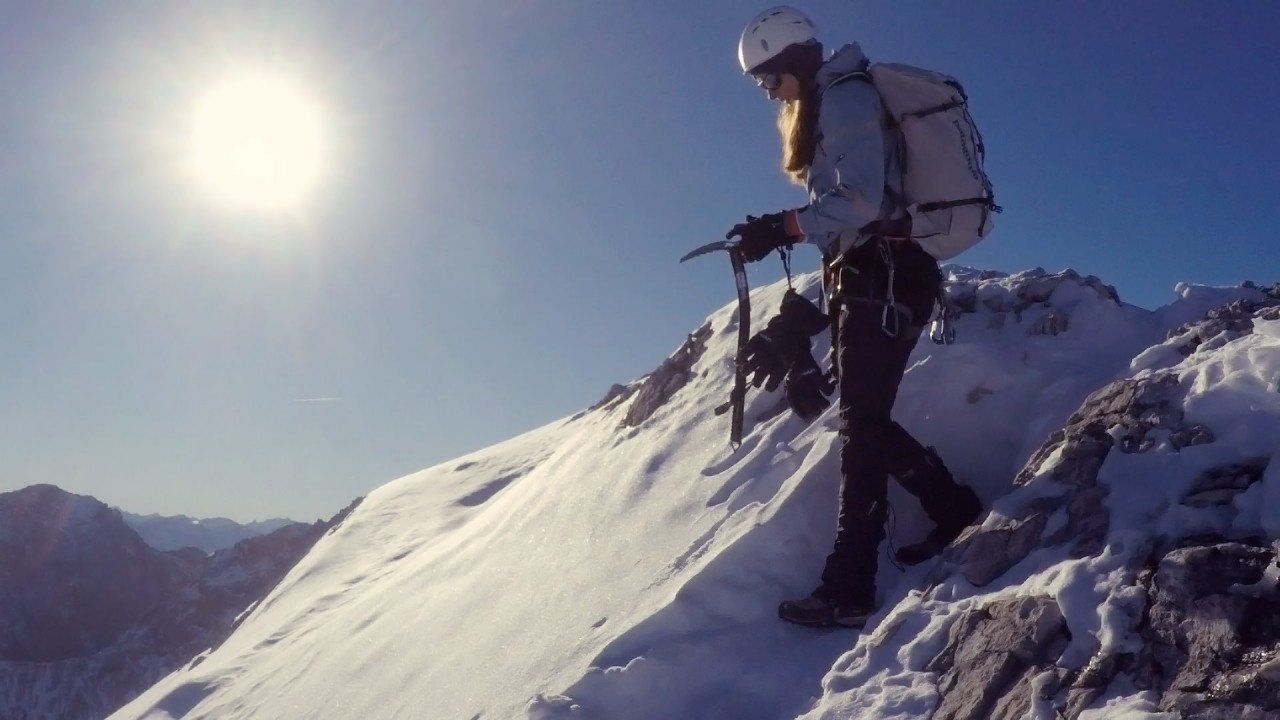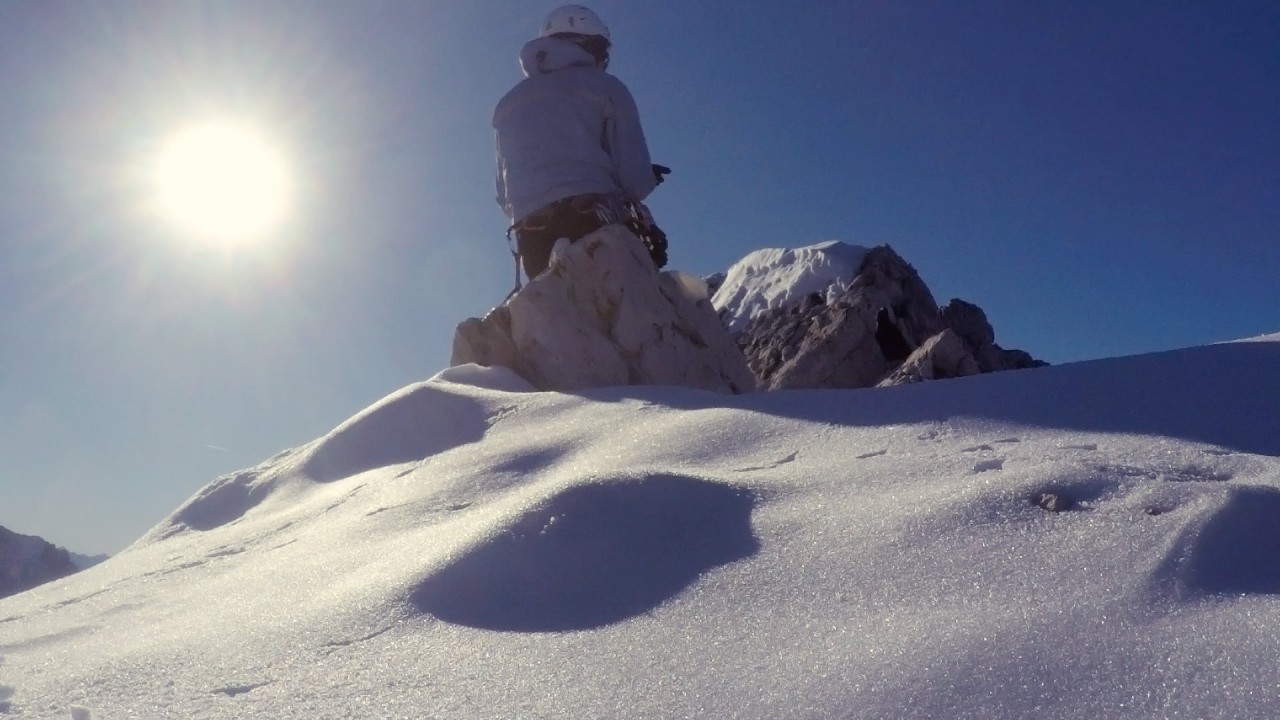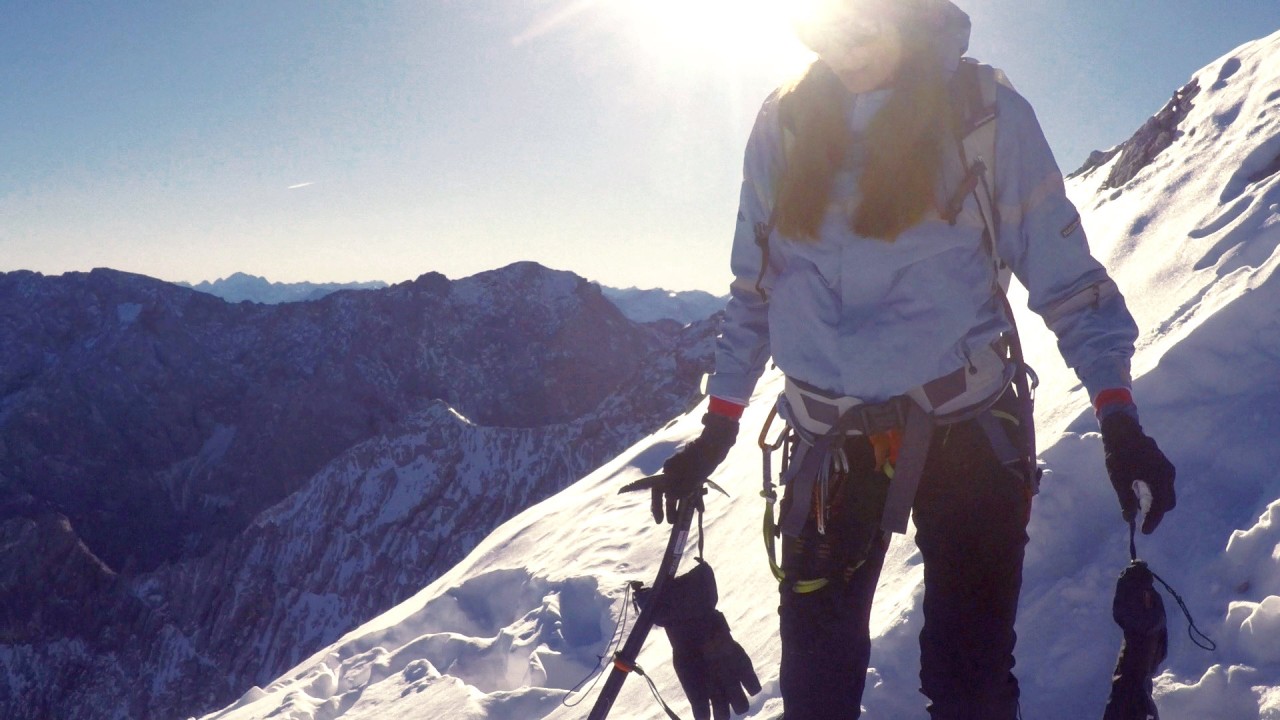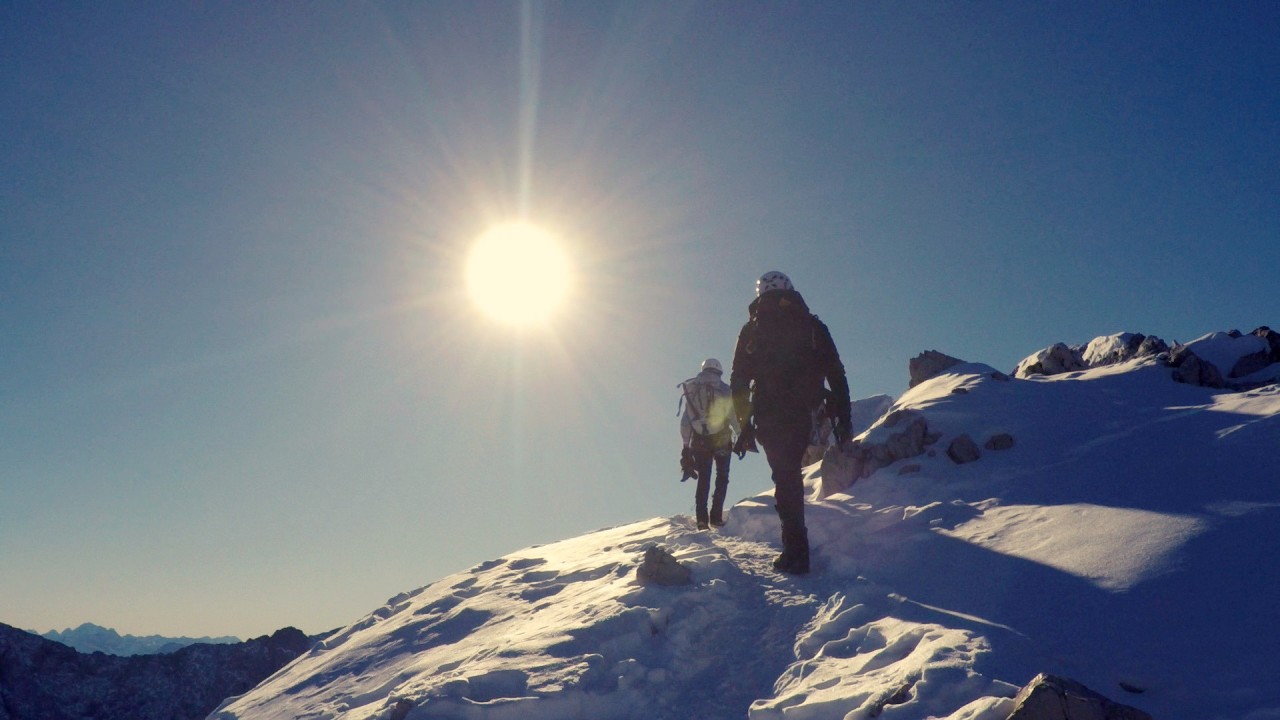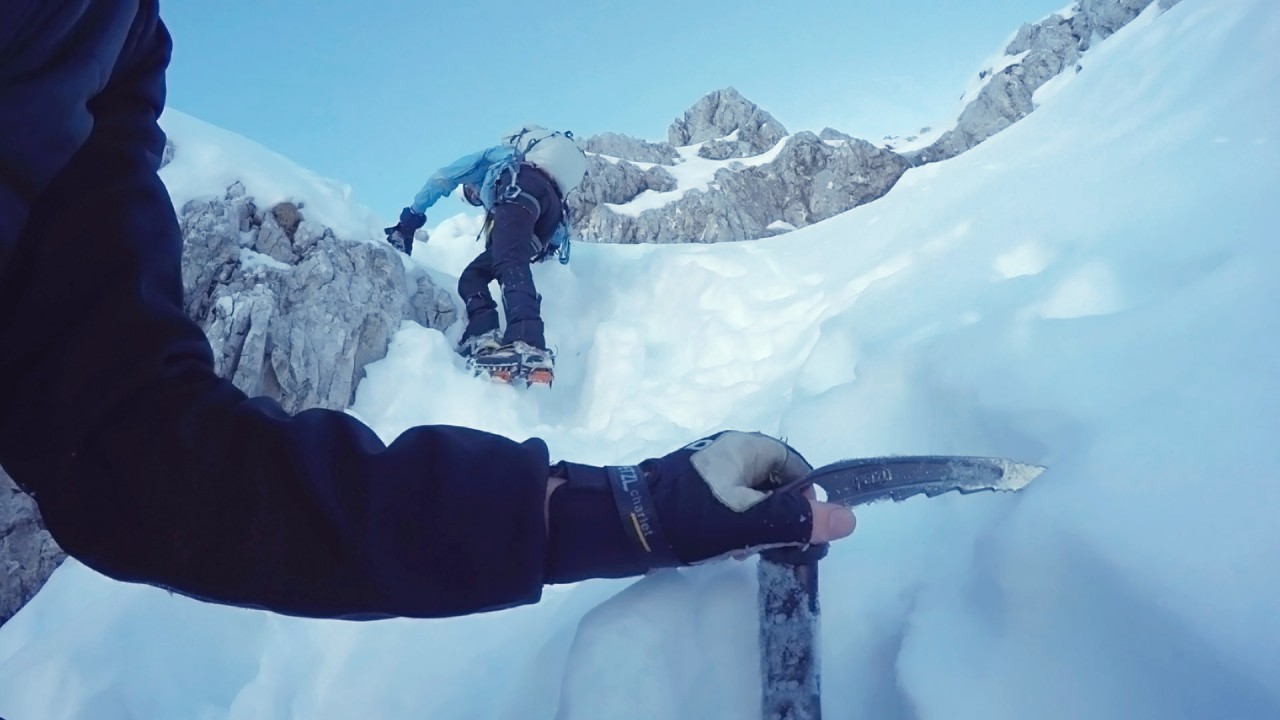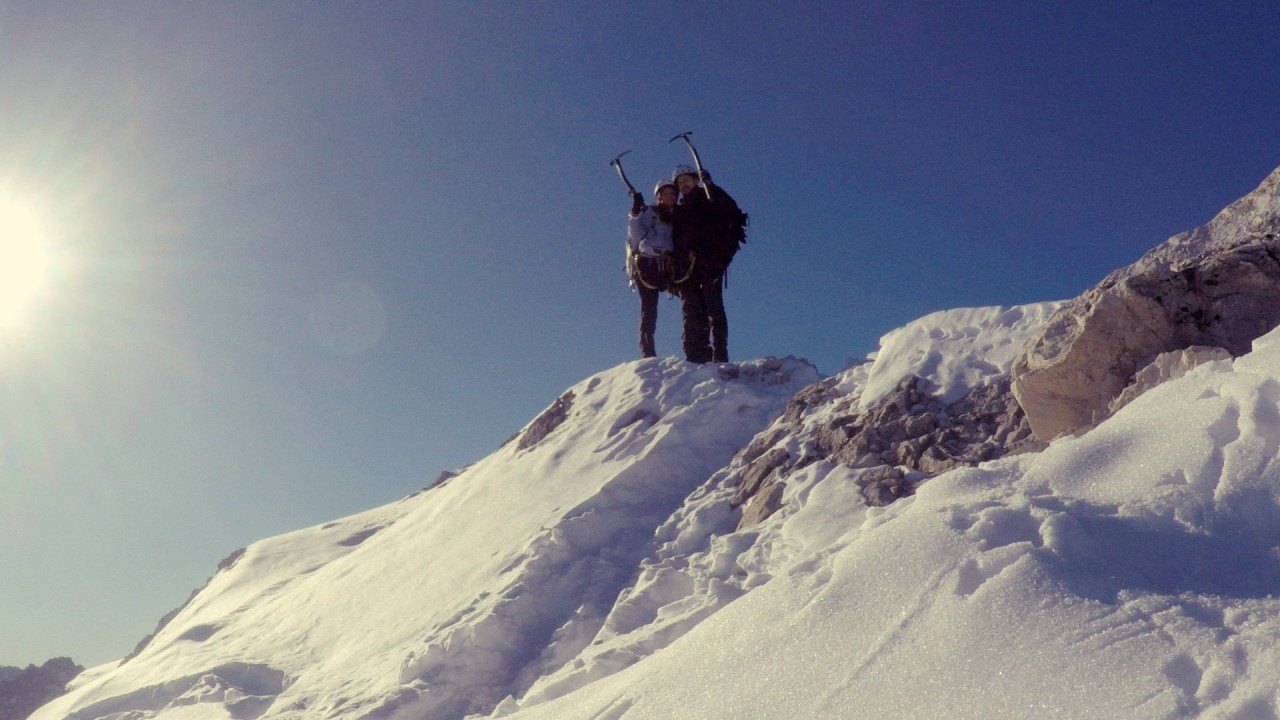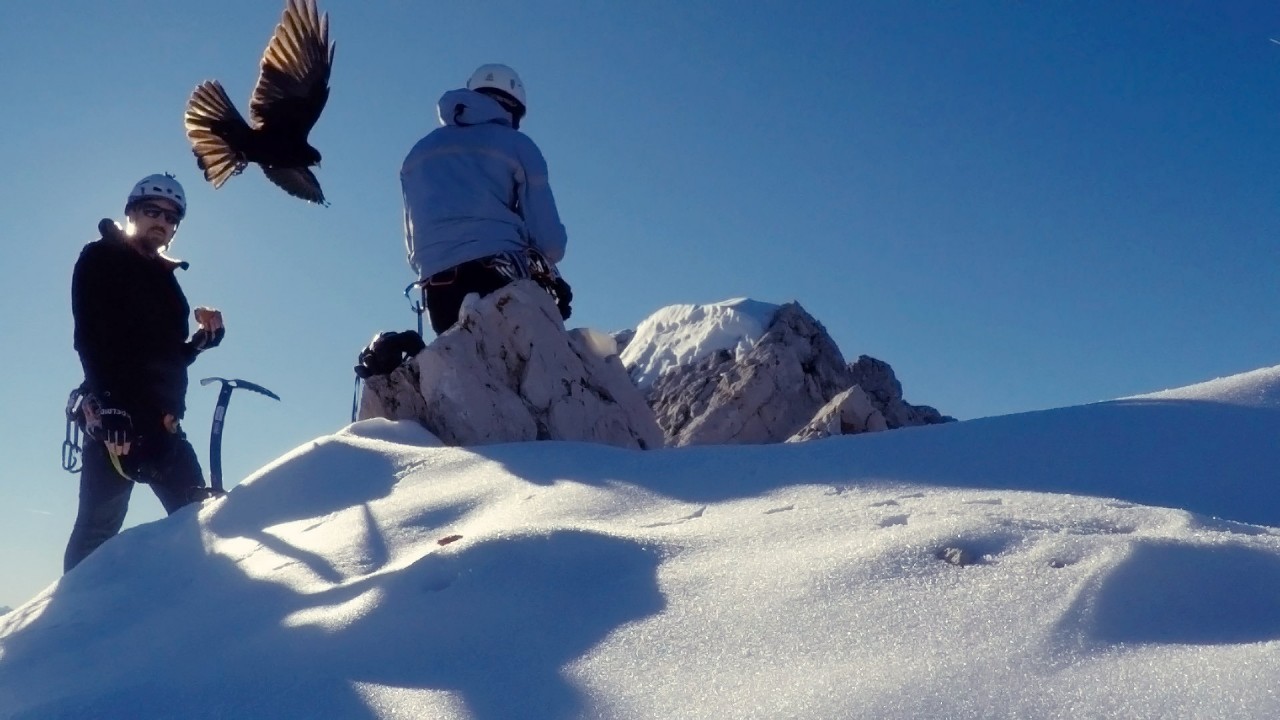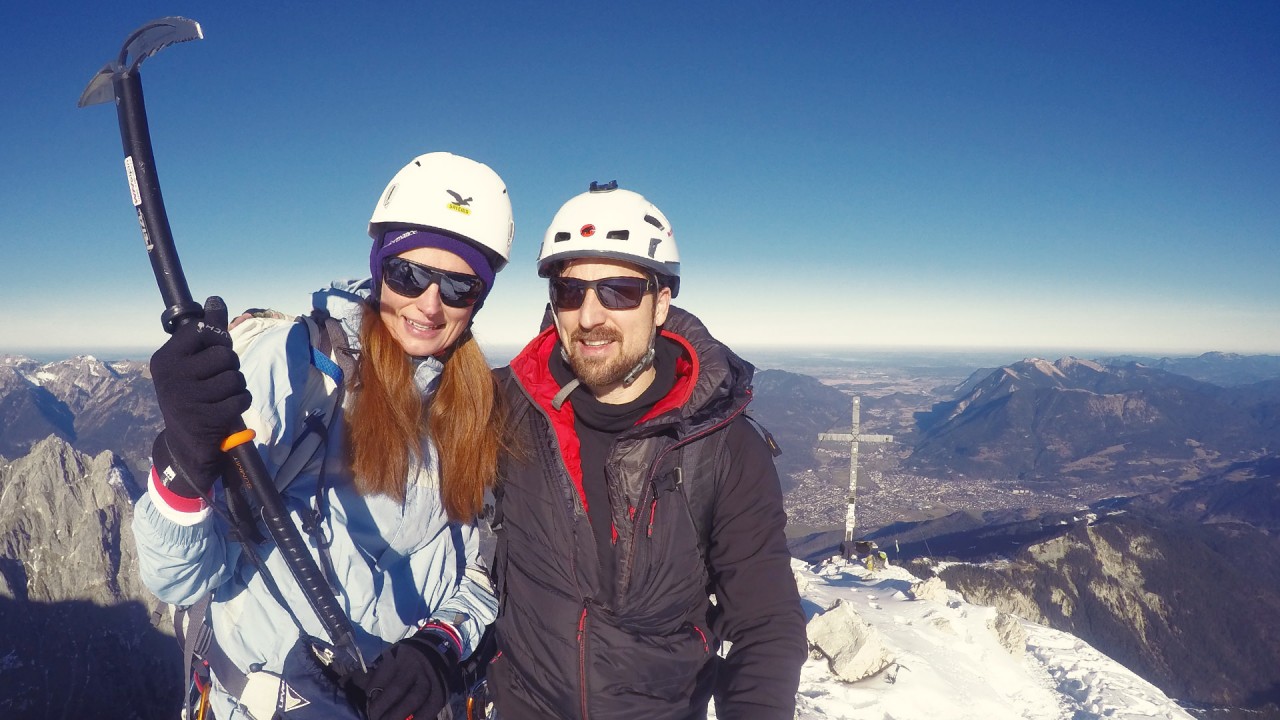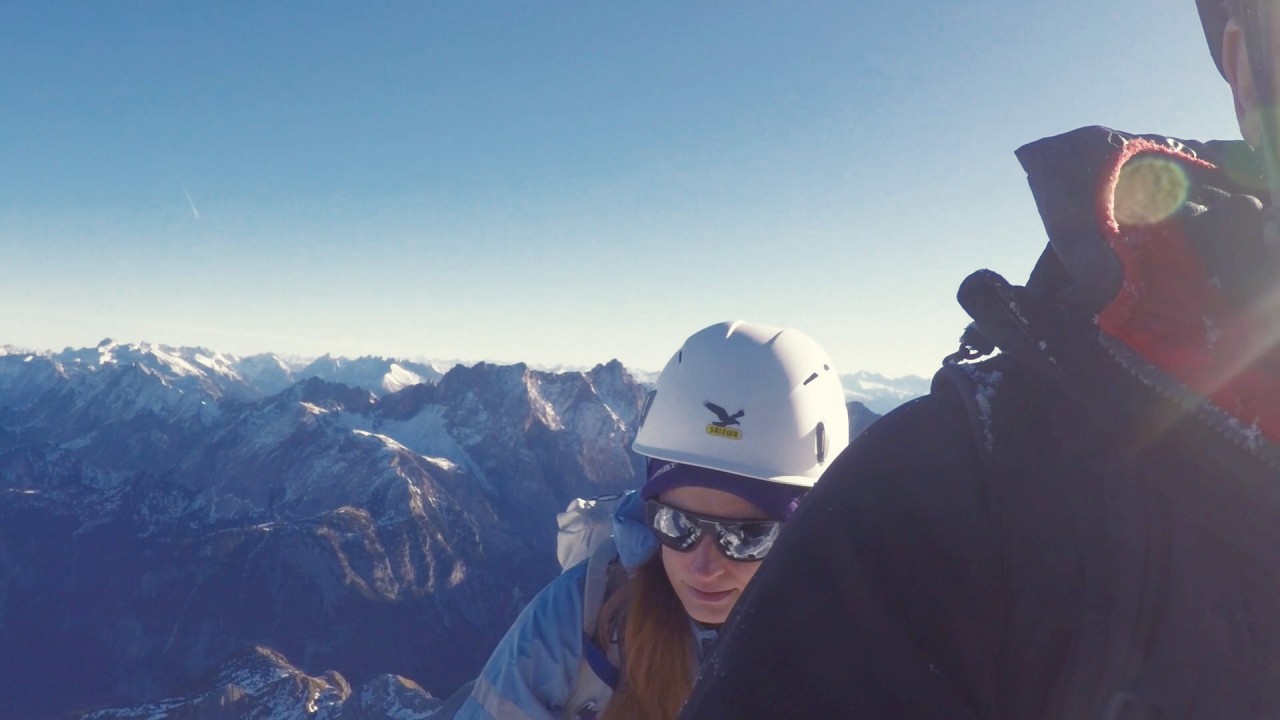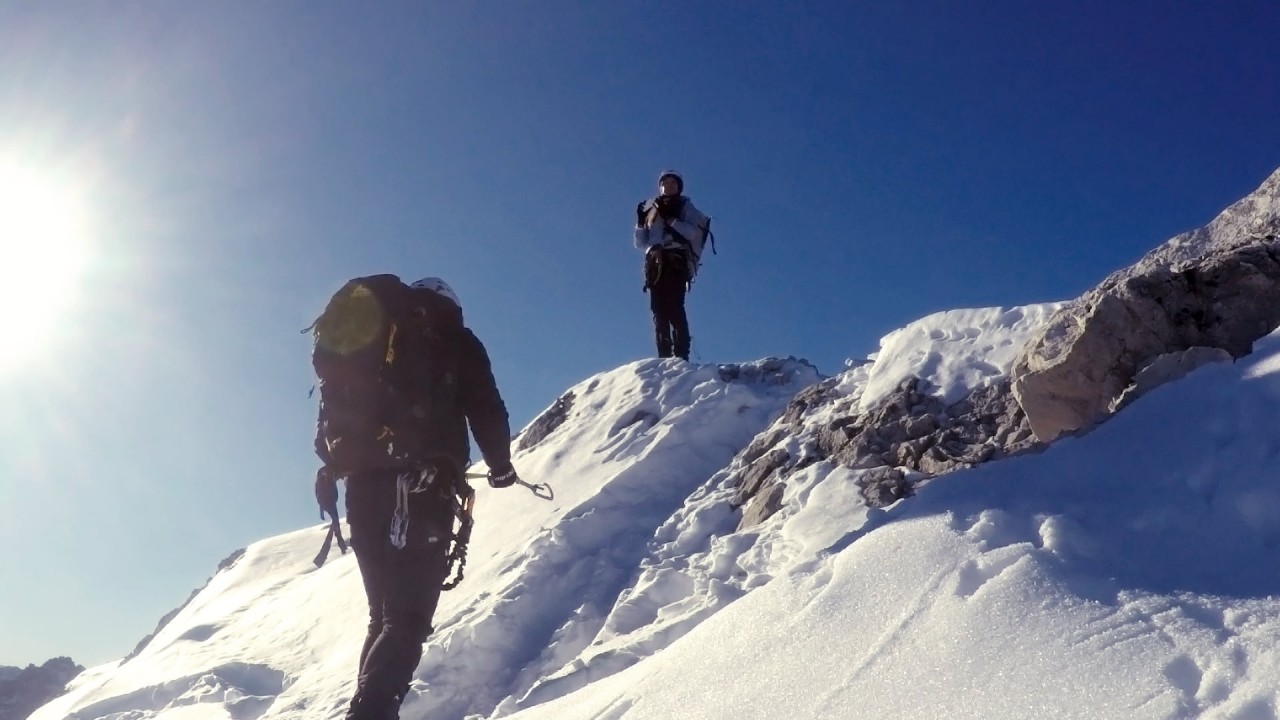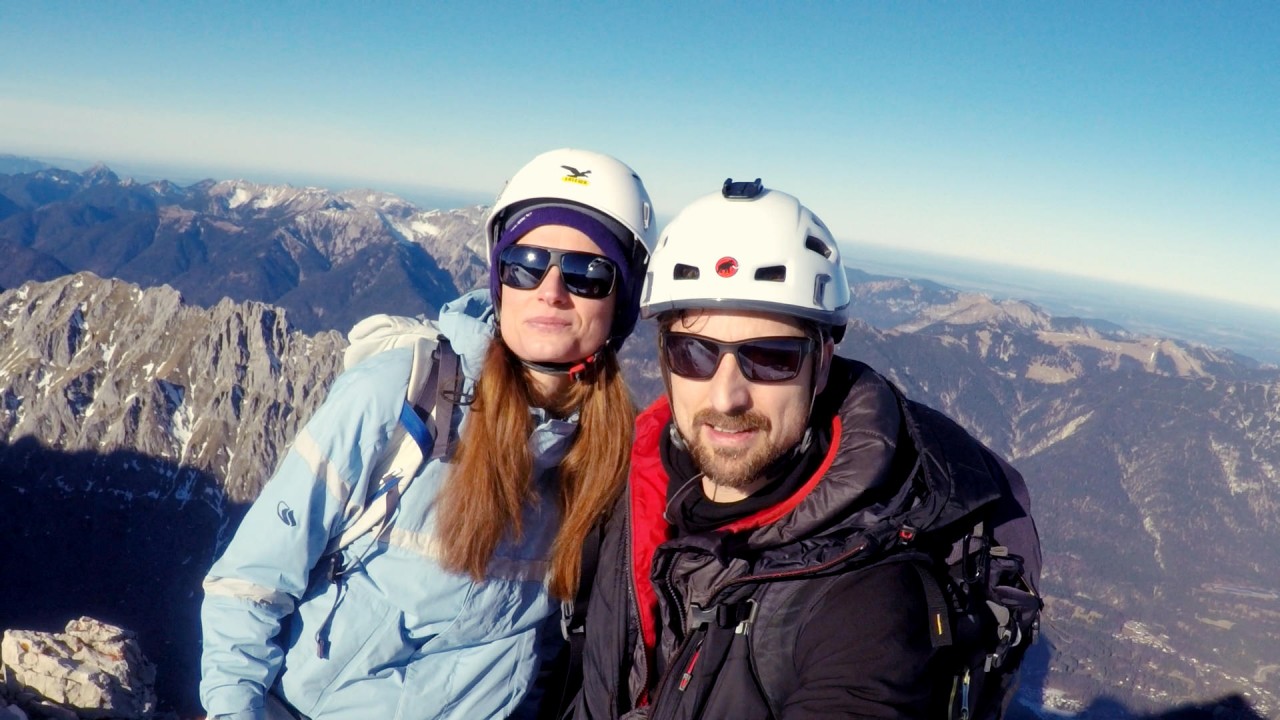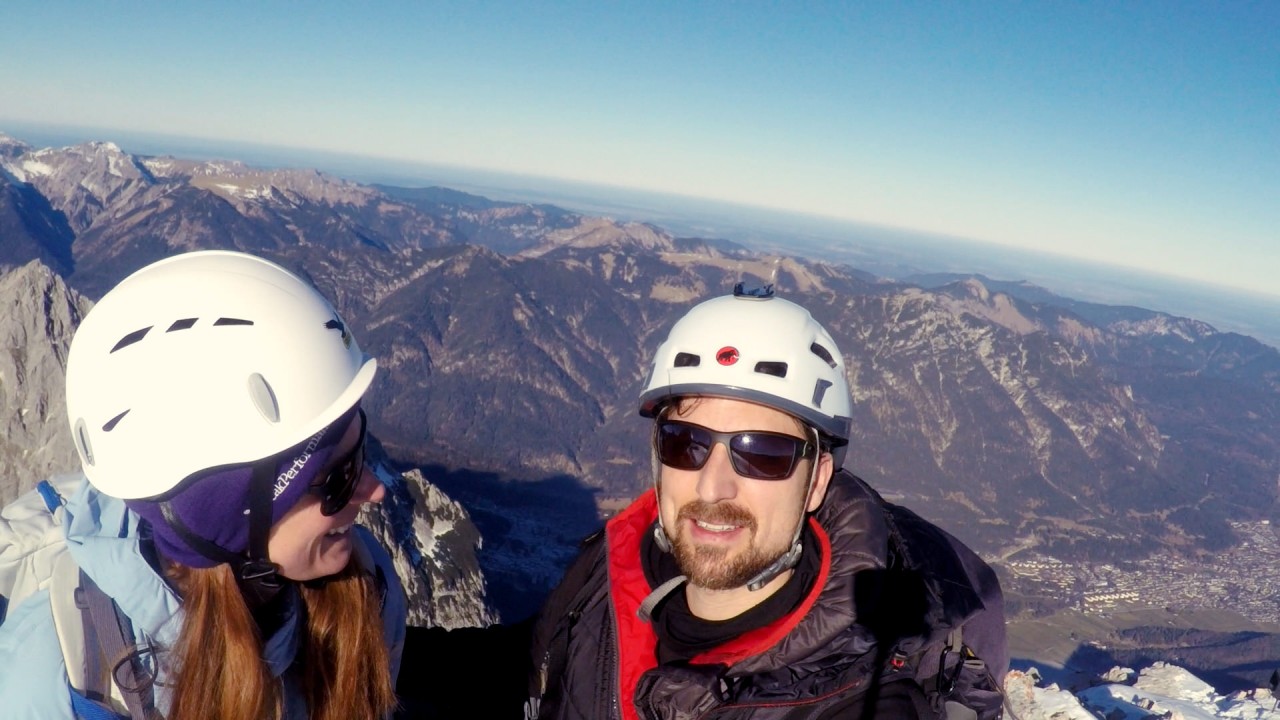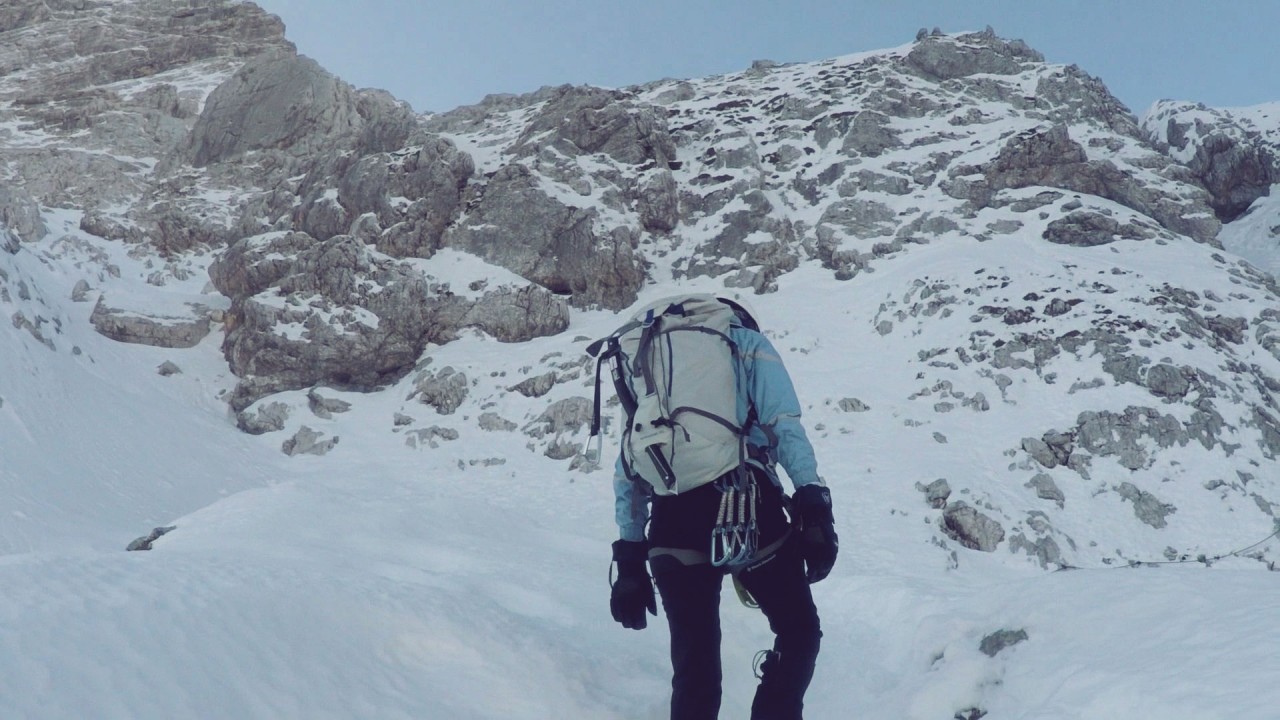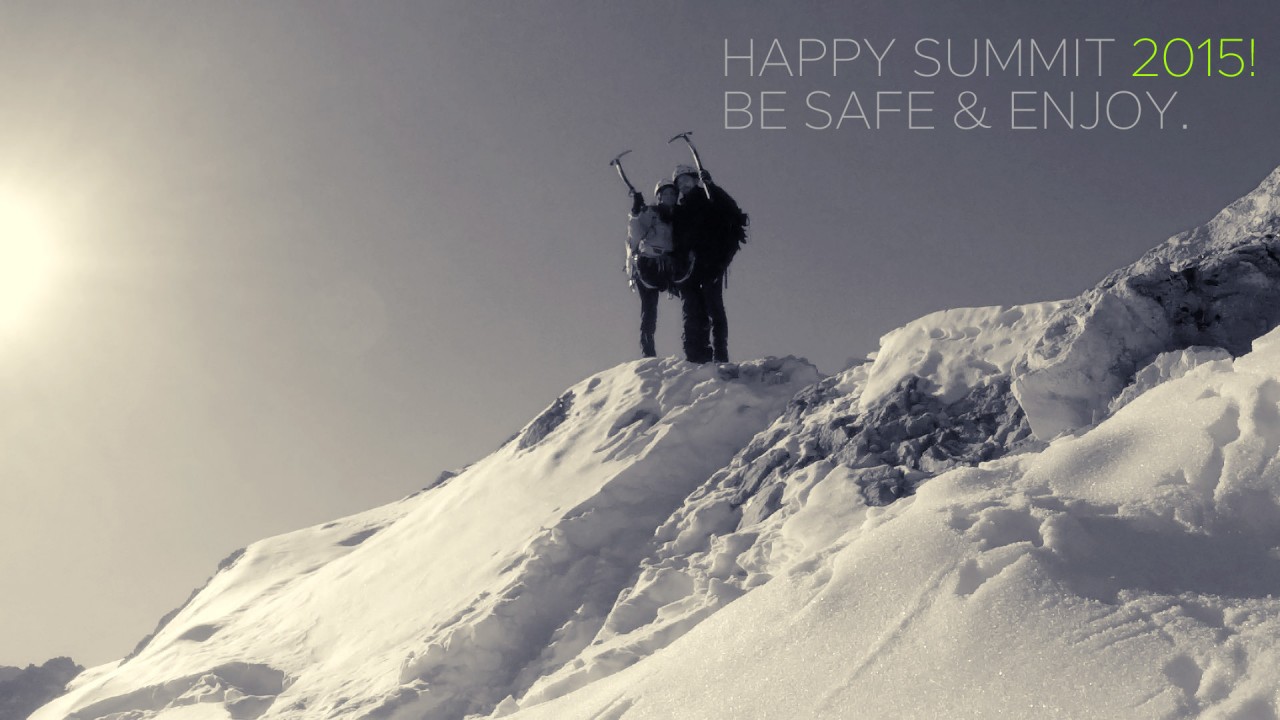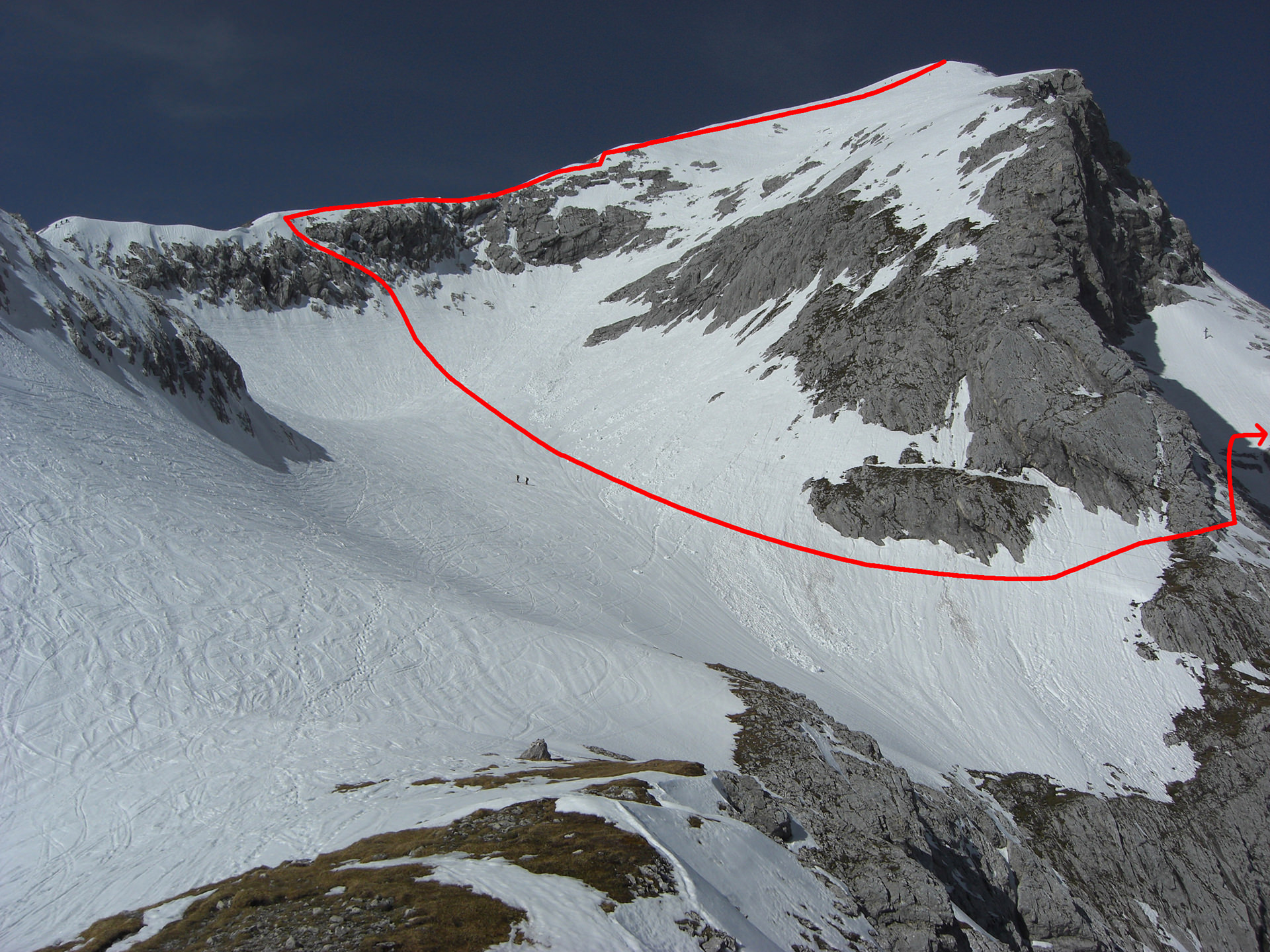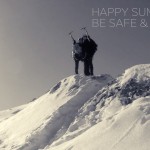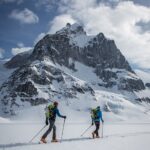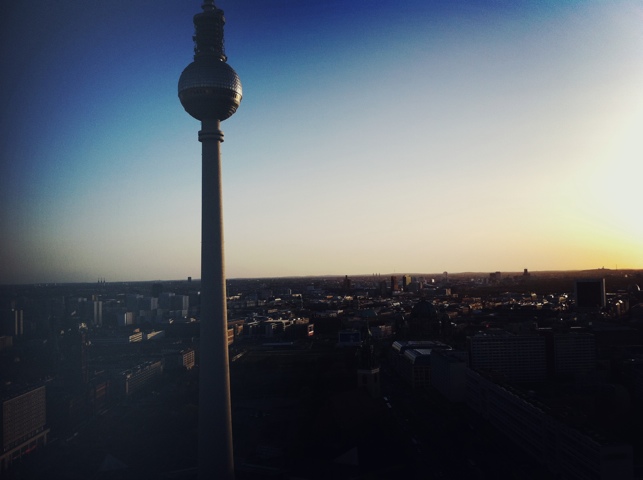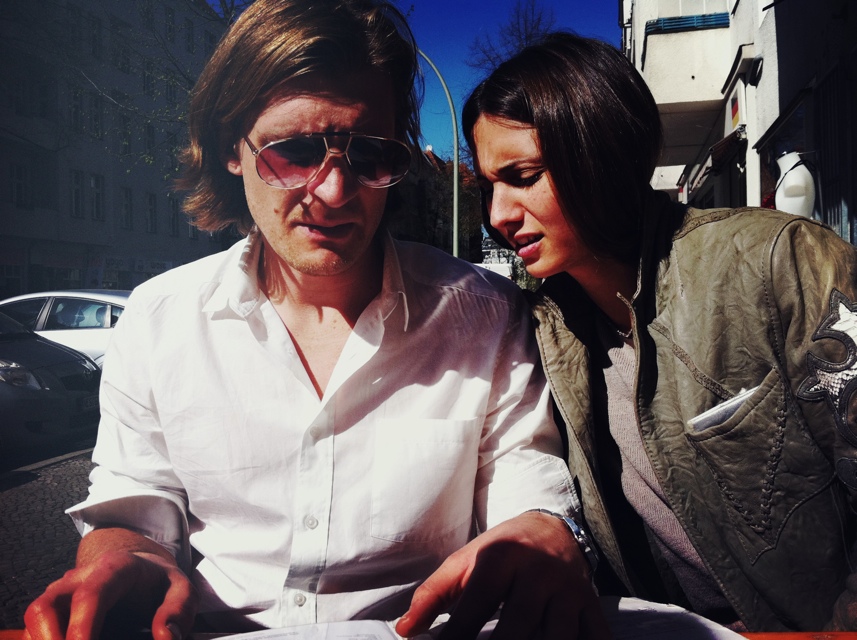Winter Ascent Alpspitze
My first winter ascent at Alpspitze 2.650m. Over the last 2 years I’ve climbed this beautiful mountain in 3 seasons. First in springtime when the top was still wrapped in snow. Second in summer but in bad weather. Constant rain and clouds destroyed any visibility. That was maybe, beside the winter ascent, the most dangerous climb as it was very slippery. Another time was late summer almost autumn, a nice climb with great visibility.
So it was time to do a winter ascent, a last ascent to close the book of this alpine route. Alpspitze is not the most difficult or technically climb but to be taken seriously. Still for me one of the most beautiful climbs when you look at the shape of the mountain and the stunning views. That’s exactly what it is, a rewarding feeling you take away from the mountain.
With it’s 2650m the mountain usually sink in snow during winter, which can be a good or bad thing. Some people climb up on ice axe and crampons over the north ridge and ski down over the east ridge. Or they climb up the east ridge and ski the same down. It deepens on the snow. North ridge is more challenging and for sure the better climb. With touring skis you would most probably choose an ascent via the east ridge.
As snow was still low at the end of this December 2015, a good weather window opened for a couple of days, we thought that this is the perfect chance for the winter ascent. So we packed our climbing gear, some warm cloth and went to Garmisch Partenkirchen to organised the rest of the needed equipment for a winter ascent. As we weren’t sure about the snow conditions on top, we brought ice axes and crampons with us to be prepared if needed. It showed up that it was the right decision we made.
The day started early with a quick breakfast before we jumped on the cable railway up to Osterfelderkopf (2065m). From here we followed the trail direction Alpspitze. A beautiful walk touched by the first sunlight of the day. It was fresh but not too cold. We expected low-low minus temperature but with the early sunlight it felt fine. We didn’t decide on the climb until we reached the last junction. Here we had to drop the coin and decide if we move left and ascent over the east ridge or do the ferrata climb over the north ridge. I thought the east ridge would be the safer version but was proofed wrong later. With the positive weather forecast and full of energy we decided on the ascent over the north ridge.
I was surprised about the good snow conditions up there. The via ferrata was almost free of ice and snow. Still, there was enough snow on the mountain but with the amount of respect and concentration, still feasible to do. With every meter of altitude we gained, sunlight and visibility increased and we got fully rewarded with some stunning views over Garmisch and towards Zugspitze following the Jubiläumsgrat. As we haven’t been sure about the descent and the conditions at the east ridge, how much snow there was still waiting for us, we really pushed our bodies to the top of the mountain. We wanted to at least have a safety window left if conditions turned out bad for us. Around lunch, approx. 3 hours after we entered the climb, we finally reached the summit. It is always such great feeling being on the top of Alpspitze and get rewarded with such an amazing view. Now in winter the air is so clear and fresh that it really made a big difference to summer. We had a short break, something to eat – for us and the birds. Some climber recommended us to not descent over the east ridge, as he heard the tunnel system was closed. Blocked through snow and not feasible for access. Instead of following pour plan he recommended to descent over the north ridge, the way we climbed up. Personally I’m not a big fan descending over the same way we ascended, and specially in our case the north ridge. On the other side, if the guy was right and you find out in front of the tunnel, it means you’re in trouble. The tunnel system is on the north-east side of the mountain and the exit and somehow connection to the mountain hut at Osterfelderkopf. Most probably, if you can’t access the tunnel and don’t carry a long rope in your bagpack, it means you have to turn around. That way back can stretch your descent for another couple of hours as you have to go down direction Bernadeinkopf I guess. But I’m not sure as I always been lucky to not enter that situation. So, again not this time.
Never change a running system! We still followed our plan and went down the east ridge – as it was planed. I didn’t believe, that with the low amount of snow we had this year, the tunnel was blocked. But I must admit I was quite nervous until we arrived at the tunnel system a couple of hours later. We lost quite some time climbing down the ridge with our ice axes and crampons as we always stepped on ice plates or into deep snow fields, which made the descent quite exciting and in the same time exhausting. Even that the ridge is not vertical, but with its 60° it seems a bit steep, definitely with snow and ice. We both been happy when we arrived at the bottom of the ridge and didn’t slip down that peak.
Here is a pic I found on the web, which shows the east ridge of Alpspitze. I marked the approx. descent we did for better understanding.
From here we had to cross the entire east side of the mountain to exit through the tunnel system. From the bottom of the east ridge we had to climb down first and later up, to enter a route along the hill side, which allowed us to follow for the next hours. What was usually part of the via ferrata in summer was now covered in snow and not accessible. The missing snow of the north ridge was waiting for us on the east ridge and along the east mountain side. So probably the guy’s advice was correct and the tunnel system was blocked. But at this time it was too late. When we made the decision to descent over the east ridge we had to take the risk of being blocked at the tunnel. For the next 1.5 hours we’ve been happy again to bring the ice axes and crampons with us. From a distance I spotted the entrance of the first tunnel and when we climbed down and realised it was accessible – some pressure released from my body. We switched on our headlamps and entered the tunnel system. The first one seemed to be the longest as it goes around some corners and it takes time until sunlight enters from the backside. Some more pressure fell off when sunlight hit the light of my headlamp. But that was only half of the rent. Another tunnel needed to be accessible to reach the way back to Osterfelderkopf. Also the second tunnel allowed us to enter and leave but right after the exit, the way was blocked with snow and ice – not accessible. We somehow managed to climb along the mountain and over that block of snow and ice to finally get back to Osterfelderkopf and the cable railway for our way down.
Overall it was an exhausting and challenging climb over 6 hours+ and fully rewarded. The stunning views, the amazing weather and the fun we had was definitely worth it. I’m glad everything went well, none of us slipped or got hurt. It’s for sure an recommendation for any alpinist and within the right weather & company every second worth it.
I’m sorry for the low outcome of photos, most pics are taken from film material I shot on GoPro, which I will use later for video. In the vast majority of risky situations, I’ve concentrate keeping my hands on safety tools instead of my camera. Keeping fingers crossed for the video material of this nice adventure.
Click READ MORE to see more pics if you haven’t seen the slideshow above.



